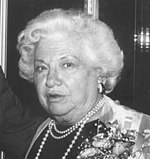
Liz Carpenter
American writer (1920-2010)
16/17th-century French explorer of North America
Samuel de Champlain was a French explorer, navigator, cartographer, and founder of Quebec City and New France. He made numerous trips across the Atlantic, created accurate maps, and formed relationships with indigenous tribes, becoming an important figure in Canadian history.
Table of Contents
Samuel de Champlainwas a French explorer, navigator, cartographer, draftsman, soldier, geographer, ethnologist, diplomat, and chronicler. He made between 21 and 29 trips across the Atlantic Ocean, and founded Quebec City, and New France, on 3 July 1608. An important figure in Canadian history, Champlain created the first accurate coastal map during his explorations and founded various colonial settlements.
Born into a family of sailors, Champlain began exploring North America in 1603, under the guidance of his uncle, Francois Grave Du Pont. After 1603, Champlain’s life and career consolidated into the path he would follow for the rest of his life. From 1604 to 1607, he participated in the exploration and creation of the first permanent European settlement north of Florida, Port Royal, Acadia (1605). In 1608, he established the French settlement that is now Quebec City. Champlain was the first European to describe the Great Lakes, and published maps of his journeys and accounts of what he learned from the natives and the French living among the Natives. He formed long time relationships with local Montagnais and Innu, and, later, with others farther west–tribes of the Ottawa River, Lake Nipissing, and Georgian Bay, and with Algonquin and Wendat. He agreed to provide assistance in the Beaver Wars against the Iroquois. He learned and mastered their languages.
Late in the year of 1615, Champlain returned to the Wendat and stayed with them over the winter, which permitted him to make the first ethnographic observations of this important nation, the events of which form the bulk of his book Voyages et Decouvertes faites en la Nouvelle France, depuis l’annee 1615 published in 1619. In 1620, Louis XIII of France ordered Champlain to cease exploration, return to Quebec, and devote himself to the administration of the country.
In every way but formal title, Samuel de Champlain served as Governor of New France, a title that may have been formally unavailable to him owing to his non-noble status. Champlain established trading companies that sent goods, primarily fur, to France, and oversaw the growth of New France in the St. Lawrence River valley until his death in 1635. Many places, streets, and structures in northeastern North America today bear his name, most notably Lake Champlain.
Samuel de Champlain was a French explorer, navigator, cartographer, draftsman, soldier, geographer, ethnologist, diplomat, and chronicler who founded Quebec City and New France in the early 17th century.
Samuel de Champlain made between 21 and 29 trips across the Atlantic Ocean during his lifetime.
Samuel de Champlain created the first accurate coastal map during his explorations, founded various colonial settlements, and became the first European to describe the Great Lakes region.
Samuel de Champlain learned and mastered the languages of the Montagnais, Innu, Ottawa River, Lake Nipissing, Georgian Bay, Algonquin, and Wendat tribes during his time in North America.
Samuel de Champlain agreed to provide assistance to the Montagnais, Innu, and other tribes in the Beaver Wars against the Iroquois.
In 1615, Samuel de Champlain returned to the Wendat and stayed with them over the winter, which allowed him to make the first ethnographic observations of this important nation.
Although he did not have the formal title, Samuel de Champlain served as the Governor of New France, overseeing the growth of the colony in the St. Lawrence River valley until his death in 1635.
They might in the future more than ever before engage in hunting beavers.
16/17th-century French explorer of North America
I directed the men in our barque to approach near the savages, and hold their arms in readiness to do their duty in case they notice any movement of these people against us.
16/17th-century French explorer of North America